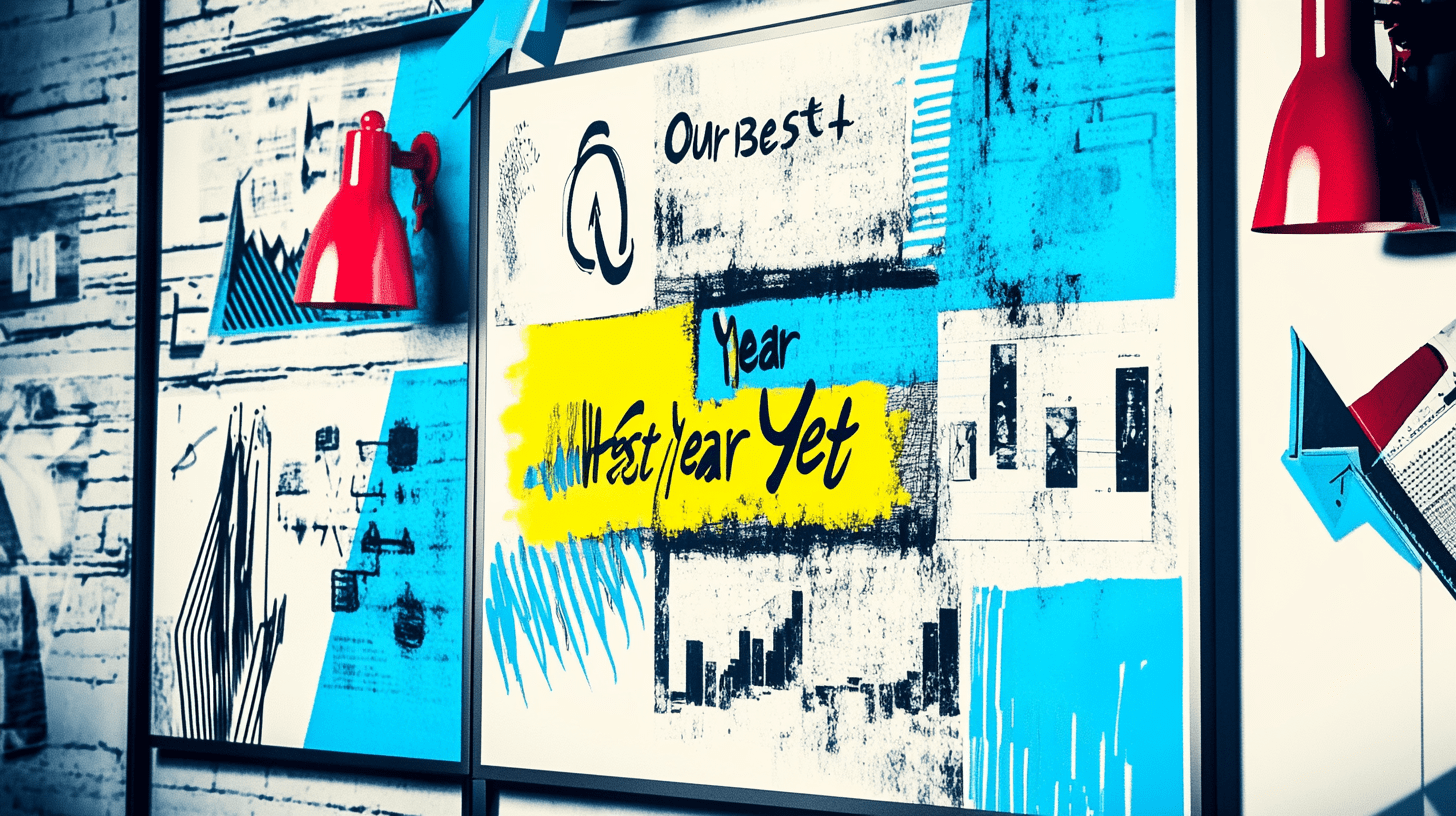Did you know Expedia made $12 million more by removing just one form field? In sales conversion rate optimization, small changes can make a big difference. For example, Going saw a 104% increase in homepage conversions by changing its call-to action.
The average sales conversion rate is only 4.3% across all industries. But, a landing page with a 2% conversion rate gets 40 leads from 2,000 clicks. Boosting that to 5% triples leads to 100, cutting cost per lead by over 60%. These numbers show that smart strategies can turn visitors into customers.
This guide will show you how to increase sales conversion. You’ll learn about the power of customer testimonials (boosting conversions by 34%) and how to make your website faster. Even small changes, like PearlsOnly’s 10% revenue boost from removing clutter, can make a big impact.
Key Takeaways
- Removing one checkout field earned Expedia $12 million, proving small changes yield big results.
- A 5% conversion rate from 2,000 clicks generates 100 leads—2.5x more than a 2% rate.
- Testimonials boost conversions by 34%, while customer reviews can drive a 270% spike (Northwestern University).
- Slow page loads (over 3 seconds) raise bounce rates by 32%, hitting mobile users hardest.
- A/B testing headlines or CTAs, like Going’s 104% conversion jump, uncovers winning strategies.
Understanding Sales Conversion Rate
Sales Conversion Rate shows how well your business turns leads into customers. Think of it like a keychain. Each lead is a key, and the ones that unlock revenue are your successes. Let’s dive into it.
What is Sales Conversion Rate?
This metric is simple: (Number of Conversions ÷ Total Leads) × 100. For example, 20 sales from 32 leads means a 62.5% Sales Conversion Rate. This formula works for all industries, from e-commerce to SaaS.
“A 10% increase in conversion rate can boost profits more effectively than a 50% rise in website traffic,” notes Harvard Business Review.
Why is Sales Conversion Rate Important?
It guides your business decisions. A high rate means your marketing and sales are working well. A low rate shows you need to fix something. For instance, one tech firm doubled its conversion rate by improving sales scripts.
Key Conversion Rate Metrics to Track
- Lead-to-Opportunity Rate: Shows how many leads become serious prospects.
- Opportunity-to-Closed Won Rate: Tracks how often deals are finalized.
- Customer Lifetime Value (CLV): Shows the long-term revenue from each conversion.
Pro tip: Use these conversion rate metrics with the SaaS Magic Number. This helps you see how efficient your business is. Small changes can lead to big improvements.
Analyzing Your Current Conversion Rate
To improve your sales funnel, you first need a solid starting point. Conversion rate analysis begins with using tools like Google Analytics or HubSpot. These tools help you see how visitors interact with your site and where they leave.
Collecting Data Effectively
Start by setting up goals that match your business goals. Track things like how many leads turn into customers and the average order value. Here are some tips:
- Integrate tools like Hotjar to see how users behave
- Check your data’s accuracy every week
- Use CRM systems to keep track of customer interactions
Identifying Trends and Patterns
Break down your data by where visitors come from, what device they use, and where they are. For example:
Company A (5,000 visitors) got 2% to convert (100 orders) while Company B (500,000 visitors) had 0.02% conversion—yet both made $25,000/month. This shows that conversion rate tracking uncovers important insights.
Look for trends like seasonal highs or lows in important metrics:
- Lead-to-customer conversion rates (2-30%)
- How different channels perform (like social media vs. email)
- The length of the sales cycle (aim for under 30 days)
Use A/B testing tools like Optimizely to test your landing pages. Remember, even small improvements in conversion rate analysis can increase your earnings—without bringing in more visitors. Start tracking today!
Optimizing Your Sales Funnel
Every sales funnel is a journey waiting to be perfected. Sales funnel optimization turns scattered efforts into a smooth path. Customers move from discovery to purchase easily. This process boosts your conversion rate and drives growth.
Stages of the Sales Funnel
Effective funnels follow a logical customer journey:
- Awareness (TOFU): Build trust with educational content (blogs, videos) to attract prospects.
- Interest (MOFU): Nurture leads with personalized emails and case studies to spark engagement.
- Purchase (BOFU): Simplify decisions with clear CTAs, pricing, and social proof like reviews.
Common Bottlenecks and Fixes
Stuck customers? Here’s how to unblock key stages:
- Low Awareness Traffic: Use targeted ads and SEO to attract your ideal audience. MNTN Performance TV uses AI to align ads with high-value viewers, boosting visibility by 40% in some campaigns.
- Lead Drop-Offs: Streamline qualification steps. Tools like CRM integrations cut friction, improving lead-to opportunity rates by 15-20%.
- Final Hesitations: Add urgency with limited-time offers or free trials. A/B tests show clear CTAs can increase conversions by up to 35%.
Remember: Even small improvements matter. For example, a 5% lift in conversion rates can double revenue without extra marketing spend. Start by auditing your funnel’s weakest links today!
Enhancing Your Website User Experience
User experience (UX) is key in making every customer interaction smooth. A bad site design can scare off 88% of visitors. But, a great experience can boost Improve conversion rates by up to 400%, as shown by industry standards. Let’s explore how to turn problems into chances.
Core Principles of Effective UX Design
“A 1-second delay in page load time can cost 7% of possible sales,” warns Google’s research, showing the need for speed.
| Metric | Poor UX | Optimized UX |
|---|---|---|
| Cart Abandonment Rate | 70% | 38% (with exit-intent popups) |
| Mobile Responsiveness | 40% user satisfaction | 90% satisfaction (per Clutch surveys) |
| Checkout Process | 2-step forms | 1-step dropshipping (increases Enhance sales performance by 35%) |
Actionable UX Improvements
- Reduce page load time to under 2 seconds (use tools like Google PageSpeed Insights)
- Implement mobile-first design (50%+ of traffic uses mobile devices)
- Use heatmaps to identify click patterns (Tools like Hotjar highlight user pain points)
- Streamline checkout to 3 steps or fewer
Think of your site’s navigation like a grocery store. If users can’t find the checkout, they leave without buying. Improve conversion rates by making it easy to buy. Every second saved and every click avoided adds up to success.
Crafting Compelling Copy
Compelling copy is key to increase sales conversion. Every word should lead visitors to act. It must also follow conversion rate optimization rules. The right words can turn visitors into buyers.
Writing Product Descriptions That Sell
Product descriptions should talk to what customers want. Use stories to show how features solve problems. For example, say “keep your gear dry from rain and snow” instead of “waterproof material.”
Highlighting benefits over features can boost sales by 10–20%. Add urgency with “limited stock” to increase sales by 30%.
- Focus on outcomes: “Save 20 hours weekly” instead of “fast processing speed”
- Use sensory language: “velvety texture” or “crisp, buttery layers”
- Embed social proof: “9/10 dentists recommend this tool”
Utilizing Call-to Actions Effectively
CTAs are the final step in your sales funnel. A/B testing shows that specific CTAs like “Claim Your Discount Now” work better by 20–50%. Make sure they stand out.
“Words that work don’t just describe—they invite,” says conversion expert Peep Laja. “A single word tweak can redefine your bottom line.”
Try different colors, places, and words for your CTAs. For example, “Join 50,000+ users” uses social proof. “Start Free Trial” shows it’s easy to begin. Clear value propositions make a big difference. When your copy matches what users want, they become committed.
Leveraging Social Proof
Trust is key in business. Social proof can turn doubts into action. It can Boost conversion rate by 34% if used right. For B2B buyers, 70% trust expert opinions, and 93% check reviews before buying. Use data to turn strangers into loyal customers.
The Power of Testimonials and Reviews
“A single testimon can outweigh a thousand ads.”
Testimonials and reviews help clear doubts. Northwestern University found products with five reviews have a Sales Conversion Rate 270% higher than those without. Here’s how to use them:
- Show 5-star reviews first—92% of buyers check them first
- Use real customer names and photos (anonymized if needed)
- Highlight real-time notifications: “3 customers bought this in the last hour”
Using Case Studies to Build Trust
Case studies offer solid proof. For B2B, 70% of buyers value expert opinions. When making case studies:
- Show clear results (e.g., “Client X saw 40% revenue growth”)
- Include steps to show how it can be done
Also, team up with influencers—63% of shoppers trust them more than brands. Instagram’s 1B users are perfect for sharing user content. Trust badges like Norton’s security seal can increase trust by 75% (Baymard Institute). Data shows 91% of users read reviews before buying.
Put testimonials at checkout, case studies on landing pages, and influencer content in ads. Being open matters: 47% of users prefer brands with positive social media feedback. Social proof is a powerful tool to Boost conversion rate without making things too complicated.
Implementing A/B Testing
Effective conversion rate optimization relies on A/B testing. This method compares two webpage versions to find the best one. It replaces guesswork with data-driven choices, making sure every change meets measurable goals.
What is A/B Testing?
A/B testing is simple. It compares two variables, like headlines or buttons, to see which one works better. It’s all about finding the higher conversion rate analysis. Key points include:
- Statistical significance: A 95% threshold shows results aren’t random
- Sample size: Bigger audiences mean less error
- Tools: Platforms like Optimizely or Google Optimize make split-testing easy
But, avoid testing during holidays or using only partial data.
Effective Strategies for A/B Testing
Begin with big changes:
- Subject lines: Short, action-oriented phrases increase email opens
- Urgency cues: “Only 3 left!” messages can boost sales
- Navigation layouts: Grids often beat lists in product displays
| Company | Tested Strategy | Outcome |
|---|---|---|
| ClassPass | Website redesign | 10% signup rate increase |
| Alaska Airlines | Loyalty program messaging | 18% sign-up boost |
| HP | Search functionality tests | $21M revenue gain |
Even small tweaks, like moving reviews up, can make a big difference. News UK saw a 39% increase in subscriptions with personalized content. Let data lead your choices, not guesses.
Utilizing Email Marketing
Email marketing is key for sales funnel success, with 15.22% conversion rates in retail and up to 7.9% in fintech. Birdies saw a 16% boost in conversions with automation and personalization. Here’s how to make the most of it:
Building an Effective Email List
- Grow lists ethically with lead magnets like free guides or discounts.
- Segment audiences using purchase history, browsing behavior, and lifecycle stage.
- Automate welcome sequences to nurture leads—Oliver Bonas saw 762% revenue growth this way.
Creating Persuasive Email Campaigns
Use these tips to improve conversion rates:
- Use dynamic content for tailored messaging. Personalized CTAs convert 202% better.
- Optimize subject lines with recipient names or past purchases (e.g., “Sarah, your abandoned cart awaits!”).
- Test send times and cadence—A/B testing revealed 73% higher click-to-open rates for interactive content.
| Industry | Average Conversion Rate |
|---|---|
| Beauty | 1.92% |
| Fintech | 5.8% |
| Travel | 2.25% |
| B2B | 2.14%-2.18% |
“Email’s $36 ROI per dollar spent makes it the unsung hero of modern marketing.” – 2023 Email Institute Report
Pro tip: Clean inactive lists quarterly. A 0.5% bounce rate ensures deliverability. With 80% of consumers preferring personalized emails, match your messages to their interests. Start with segmented campaigns for first-time buyers or high-value customers.
Engaging Your Audience on Social Media
Social media is more than just getting likes. It’s a way to enhance sales performance. By matching content to what your audience likes and needs, you can turn followers into buyers. Let’s explore how to make the most of this.
Choosing the Right Platforms
Not all social media sites are the same. Use this table to find the best fit for your business:
| Platform | Average Conversion Rate |
|---|---|
| 9.21% | |
| TikTok | 3.4% |
| 1.08% | |
| YouTube | 1.4% |
Focus on platforms where your audience is most active. For instance, B2B brands do well on LinkedIn. Lifestyle brands might find TikTok more appealing because of its younger audience.
Best Practices for Social Media Engagement
- Post video content: It keeps people on your page longer and helps track conversion rates.
- Embed shoppable posts: This lets users buy from Instagram or TikTok without leaving the app.
- Run A/B tests on posts: Compare different captions, images, and calls to action to find what works best.
Pro tip: Use Sprout Social’s Web Conversions report to see how ads affect your website. Combine this with Google Analytics for a complete view of the buyer’s journey.
“89% of marketers see ROI boosts with personalized campaigns.”
Make ads more personal by using data like past purchases. Quick-loading landing pages (less than 2 seconds) also help keep visitors interested.
Personalization and Customer Targeting
Personalization is more than a trend; it’s a conversion rate optimization strategy that shows real results. Today’s shoppers want experiences that feel made just for them, with 71% saying it’s key. Companies that don’t get it risk losing out: 76% of buyers get upset when they don’t get what they want.
Understanding Your Audience
Using data and tracking behavior helps uncover what customers like. But to really boost increase sales conversion, you need to dig deeper. Begin by mapping out how customers move through your site to see where personal touches make a difference:
- Analyze what they buy and what they look at
- Use profiles to group your audience
- Watch for signs like when they leave things in their cart
Tailoring Offers to Individual Needs
Systems that adjust content based on what you know can make a big difference. Here’s how personalization stacks up against the old way:
| Traditional Method | Personalized Approach |
|---|---|
| Generic banners for all users | AI-driven product recommendations raise AOV by 40% (Zalando) |
| One-size-fits-all email blasts | Behavior-triggered discounts cut cart abandonment |
Hyper-personalized campaigns can boost conversion rates by 60%, according to McKinsey’s 2023 report.
Start by trying out tools like Netflix’s recommendations or TUI’s dynamic ads. Even small changes, like offers based on where you are or discounts on your birthday, can make a big difference. With 78% of buyers preferring personalized experiences, it’s not just nice to offer it—it’s necessary to stay competitive.
Measuring and Refining Your Strategy
Tracking conversion rates is key to growth. For B2B SaaS companies, a 1-2% boost in conversion can mean thousands more in revenue each year. Tools like Superlayer’s call analysis tools can analyze up to 50 conversations at once. They help find patterns in customer objections.
Google Analytics heatmaps show where visitors leave forms or exit pages. This helps refine your strategy.
Tools for Tracking Conversion Rates
Superlayer’s AI finds common pain points in calls. CRM systems like Salesforce track how leads become customers. Heatmap tools like Hotjar show where users leave checkout carts.
Email platforms like Mailchimp track how well email campaigns perform. Dashboards should focus on key metrics like landing page conversions and average order value. This helps avoid too much data.
Continuous Improvement Techniques
A/B test pricing pages weekly with tools like Optimizely. Try different button colors or pricing tiers. Sprint cycles of 2-4 weeks help test ideas like simpler checkout forms.
Build a shared library of hypotheses with the sales team. This helps focus on the most impactful tests. For example, a 20% conversion rate can jump to 25% with simpler forms.
Adopt a “1% better daily” mindset. Aim for small monthly goals like reducing bounce rates or increasing demo signups. These goals add up over time.
Regularly check CRM data to make sure sales scripts are effective. A 3% conversion rate in CRM tools is average. But, reaching 4% with improvements adds real value.




